Since 2012, users of Apple devices have been assigned a unique Identity for Advertisers (IDFA) to facilitate targeted advertising. This spring Apple will require apps that use IDFAs to notify users via pop-up notifications to obtain opt-in consent. Previously, IDFA used an opt-out state as default.
This change has many industry players concerned that the majority of iPhone users will not opt-in to tracking. The inability to track user behavior across applications means advertisers will find it increasingly difficult to target ads to precise audiences. The ramifications are immense as Apple iOS owns over 55% of the North American market share. Stakeholders across the digital marketing ecosystem are scrambling to find solutions. And solidifying the direct relationship with audiences is at the top of the list.
How this Affects Social Media Platforms
IDFA helped Facebook and other developers learn what apps users downloaded, how frequently they used those apps, their in-app purchases, and the websites they visit on desktop and mobile devices and Apple TV. The collected behavioral data delivers user insights to improve ad targeting and placement. Without it, social media platforms will find it more challenging to target users, optimize or attribute conversions, and generally see users doing after they click on an ad. 
This will create significant measurement and audience-building challenges. If Facebook can’t see whether a user who clicked on an ad converts on their client’s website, it will be more difficult to measure the ad’s effectiveness. To mitigate disaster and convince its users that tracking is a net good, Facebook has started serving pop-up messages of their own in support of ad tracking on Facebook and Instagram apps.
How this Affects Advertisers
The short answer is that without using third-party tracking information audience data, targeting will be more expensive and less effective.
Depending on IDFA because they do not own the relationship with their audiences, advertisers will find it more difficult to retarget website visitors on iOS devices. Additionally, Facebook won’t be able to collect data on user behavior when they’re not in the app. This will greatly limit affinity and interest targeting in Facebook. When targeting isn’t optimized, advertisers will pay more per result, meaning goals will have a higher cost per acquisition (CPA) or cost per result.
That’s not to say advertisers won’t get the same cost per click or engagement. It’s just going to take more clicks or engagements to reach their goals. Advertisers will have to rely on less precise contextual targeting. Without investing in technologies like customer data platforms (CDP) that authenticate identity, audiences targeting at scale will prove more difficult.
The new IDFA opt-in default is the latest market force that is clamping down on audience tracking. Google is scheduled to phase out third-party cookie support in their Chrome browser later this year. This follows Firefox and Safari removing support in 2019 and 2020, respectively. Third-party audiences have waned as the common currency for the digital marketing ecosystem. An IDFA opt-in transforms this steady march toward tighter consumer privacy protections into an all-out sprint as Apple OS owns the majority of the mobile share.
The Ultimate Solution: Own Your Relationships
The key to success going forward for advertisers and publishers alike is to own the relationship with their audiences and make consent a part of their DNA. Organizations that own direct relationships with high-value audiences and do not rely on third-party tracking will enjoy a distinct advantage over those that do not. For most, to accomplish this requires investing in first-party data that technology to manage it.
Publishers can continue to earn the trust of their audiences with valuable content and experiences. If they do this well they will remain the gatekeepers to those audiences and can find ways to responsibly monetize their direct relationships. Intent-signaling behaviors — observable as users search, click, consume content and repeat — are the lifeblood of the digital advertising ecosystem and something publishers must honor and nurture.
This is the sacred value exchange between publishers and their audiences. If publishers want to leverage behavioral data on behalf of our advertisers, they must earn the trust of their audience by delivering on the promise of value. It’s not enough for media organizations to be the gatekeepers to their audiences, we need to reimagine themselves as first-party data platforms AND ensure the value exchange.
Where We Go From Here
Stricter privacy legislation, the demise of the third-party cookie, and IDFA opt-in don’t have to threaten the viability of independent publishers within the digital advertising ecosystem. These market forces instead create opportunities to innovate by owning the relationship with first-party audiences and earning the right to collect behavioral data.
The good news is that Leverage Lab has you covered with cookieless solutions today. We help advertisers and publishers attract and engage addressable audiences at scale via the power of CDP technology. We speed data-rich organizations to value ensuring they can reach and measure individuals and not cookies, devices, or IDFAs.







